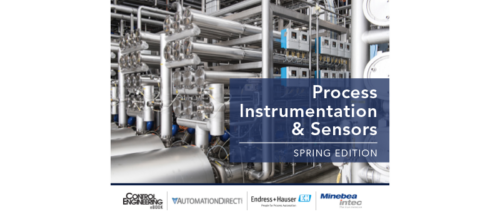Rethink instrument specifications when specifying fieldbus devices
Fieldbus permits multiple devices to communicate a plethora of data on one twisted-pair instrument cable to a host system. However, instrument engineers responsible for specifying and installing fieldbus technology must ensure fieldbus device specifications accurately and completely describe physical and functional requirements.
Fieldbus permits multiple devices to communicate a plethora of data on one twisted-pair instrument cable to a host system. However, instrument engineers responsible for specifying and installing fieldbus technology must ensure fieldbus device specifications accurately and completely describe physical and functional requirements.
Physical requirements
The primary difference between fieldbus and conventional instrumentation is the communications protocol. Traditional devices use 4-20 mA analog signals with and without HART protocol. Fieldbus devices use digital communications, such as FOUNDATION fieldbus. It is critical to specify the desired fieldbus protocol.
Some fieldbus technologies allow devices to be powered from the same wire used for communications. When these fieldbus technologies are selected, users should specify the highest and lowest voltage levels expected and the maximum current draw allowed for each device class.
For example, many fieldbus devices are designed to work in a voltage range between 9 and 32 V dc. However, not all devices work over this range. In all but a few rare cases, fieldbus segments should be designed to operate with no less than 12 V dc.
Depending on device type and electronic efficiency, fieldbus devices can draw from 10 mA to more than 30 mA each. Most “four-wire” devices will also draw some current. If segment design is complete, it’s important to include the maximum permitted current draw for each class of device. For example, if the segment design is based on all transmitters requiring 15 mA and all valves requiring 30 mA, the segment will not work properly if the installed transmitters draw 20 mA and the control valves draw 40 mA. (For more information, see “4-20 mA Transmitters Alive and Kicking,” CE , Oct. ’98, p. 109). When known, each device’s maximum current draw allowance from the fieldbus segment is a design parameter that must be specified.
Functional requirements
Fieldbus technology is still in its infancy and the quantity of embedded functions remains relatively small, but as manufacturers increase embedded intelligence, this list will grow. Besides parameters such as operating range, metallurgy, and fill fluid, instrument engineers will need to specify the required “smart” functions for each device.
Basic functionality is defined for a specific fieldbus technology. For example, FOUNDATION fieldbus requires that all transmitters include an analog input (AI) function block and all control valves include an analog output block. However some manufacturers are already including additional function blocks. For example, a mass flow meter may include AI blocks for mass flow, fluid density, and temperature. Such an instrument may be better suited to an application than one with only a function block for mass flow. Other function blocks, such as PID, signal selector, and signal splitter, are available in some fieldbus devices. To avoid learning too late that required function blocks were not included, users should list on the instrument specification sheet all function blocks required for the intended application.
One of the most promising aspects of fieldbus technology is its ability to bring diagnostic information from field devices into the host system. However, diagnostic data is not a basic part of all fieldbus technology specifications. It’s possible to buy two pH transmitters from different manufacturers that provide identical process data, though only one provides diagnostics that indicate when the pH probe needs to be cleaned. If diagnostics are required, they must be specified on the instrument specification sheet.
What’s next?
The use of fieldbus instruments requires modification to the ISA S20 specification sheets. Until these changes are completed, instrument engineers responsible for specifying and installing fieldbus technologies should educate themselves, and their purchasing departments, on the differences between conventional and fieldbus instrumentation so accurate specifications can be prepared.
| Author Information |
| Wade Stewart, fieldbus consultant, Fisher-Rosemount Systems Inc. |
Ask these questions when specifying fieldbus devices
Fieldbus protocol required (i.e., FOUNDATION, Profibus, etc.)?
High and low voltage levels expected?
Maximum current draw allowed for each device class?
Additional function blocks required?
Diagnostic information required?
Do you have experience and expertise with the topics mentioned in this content? You should consider contributing to our CFE Media editorial team and getting the recognition you and your company deserve. Click here to start this process.


